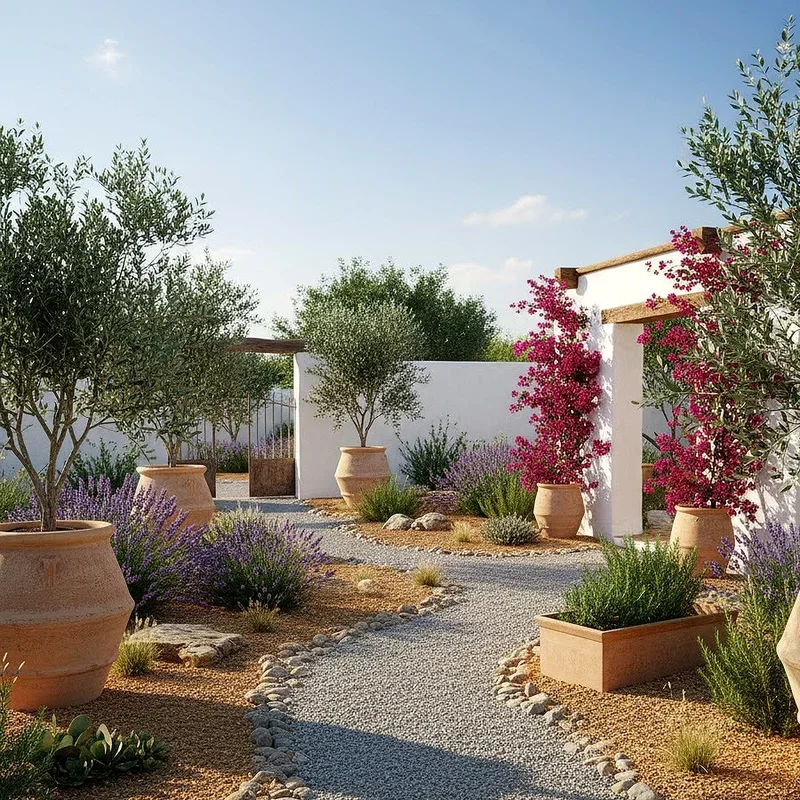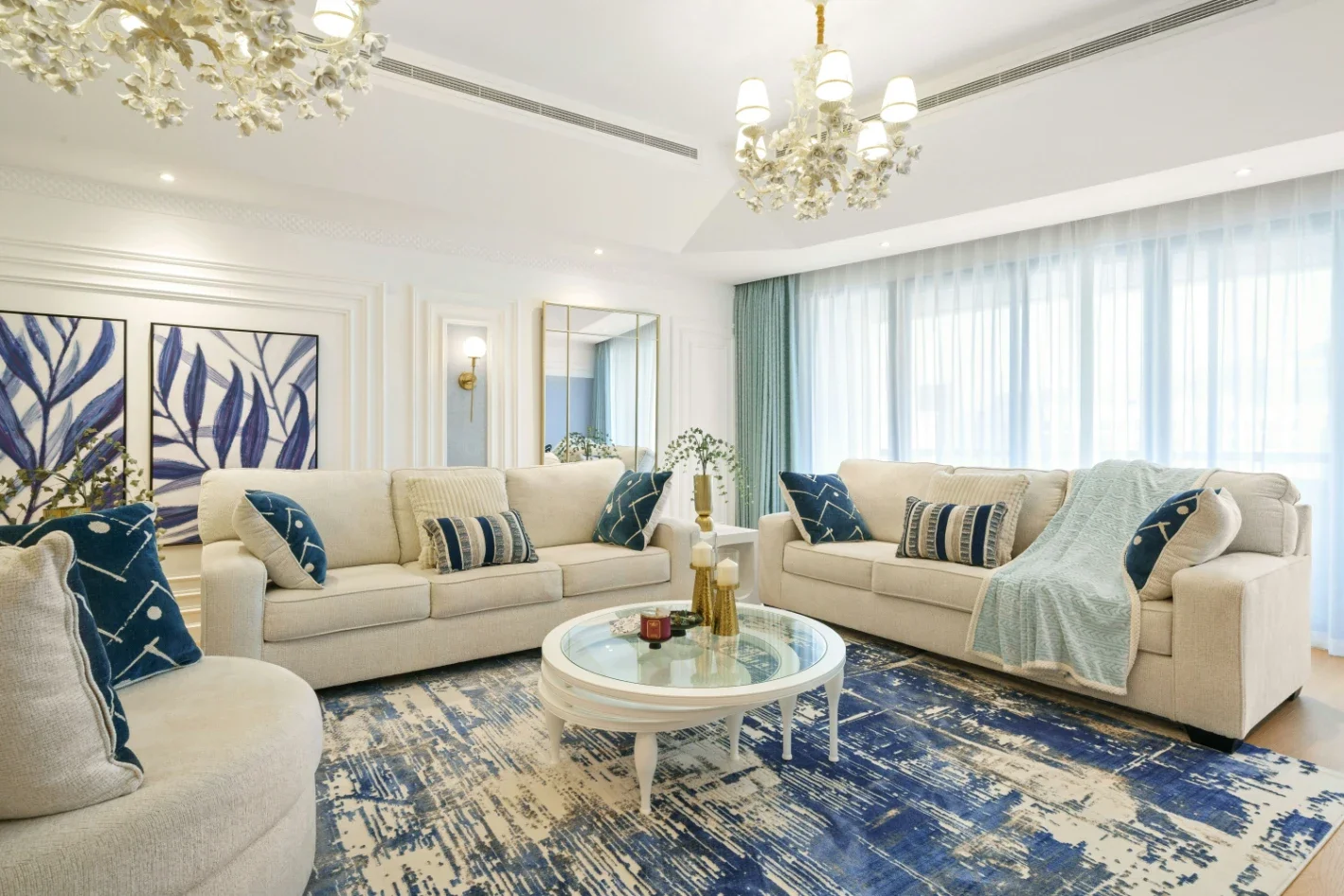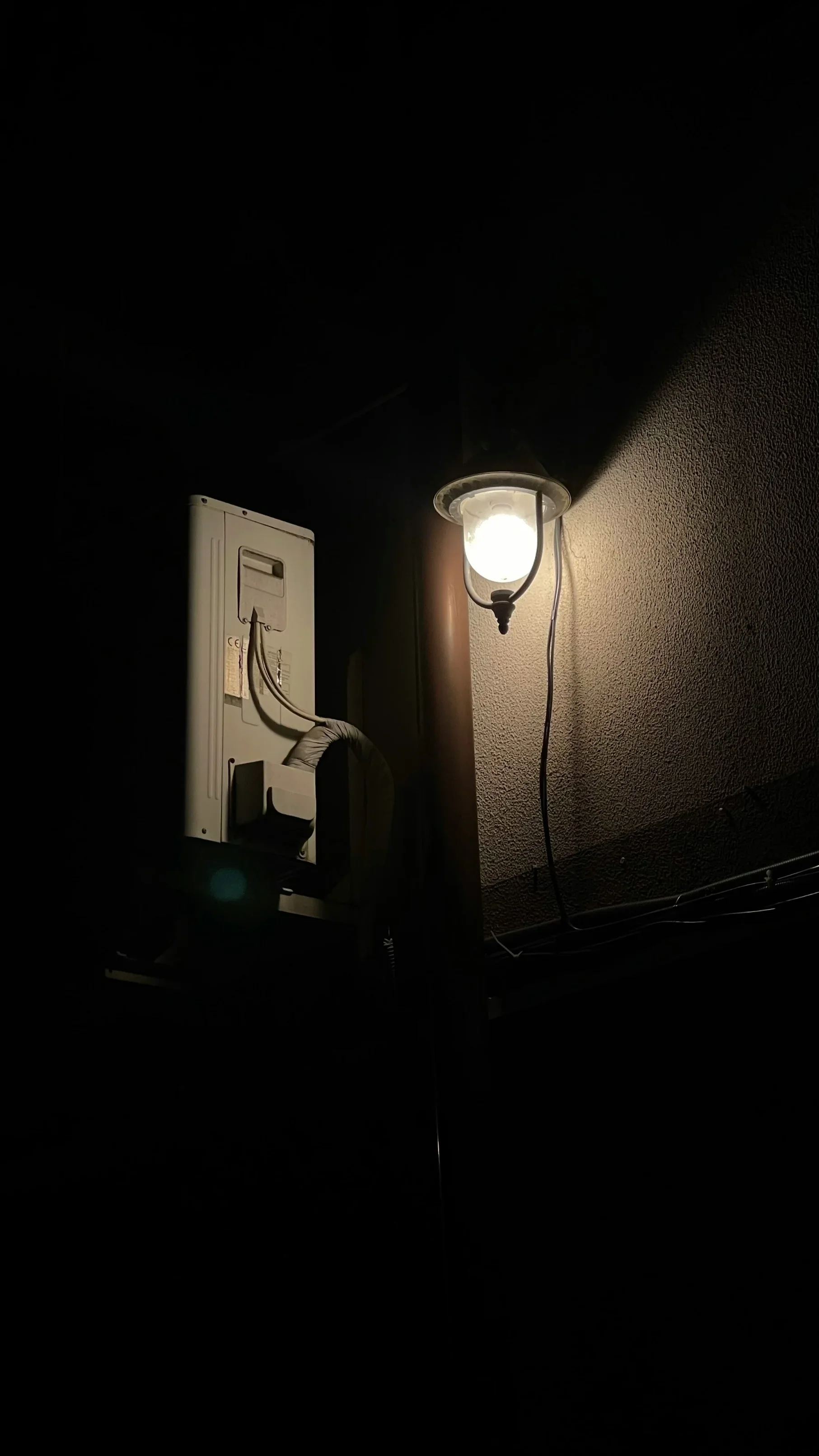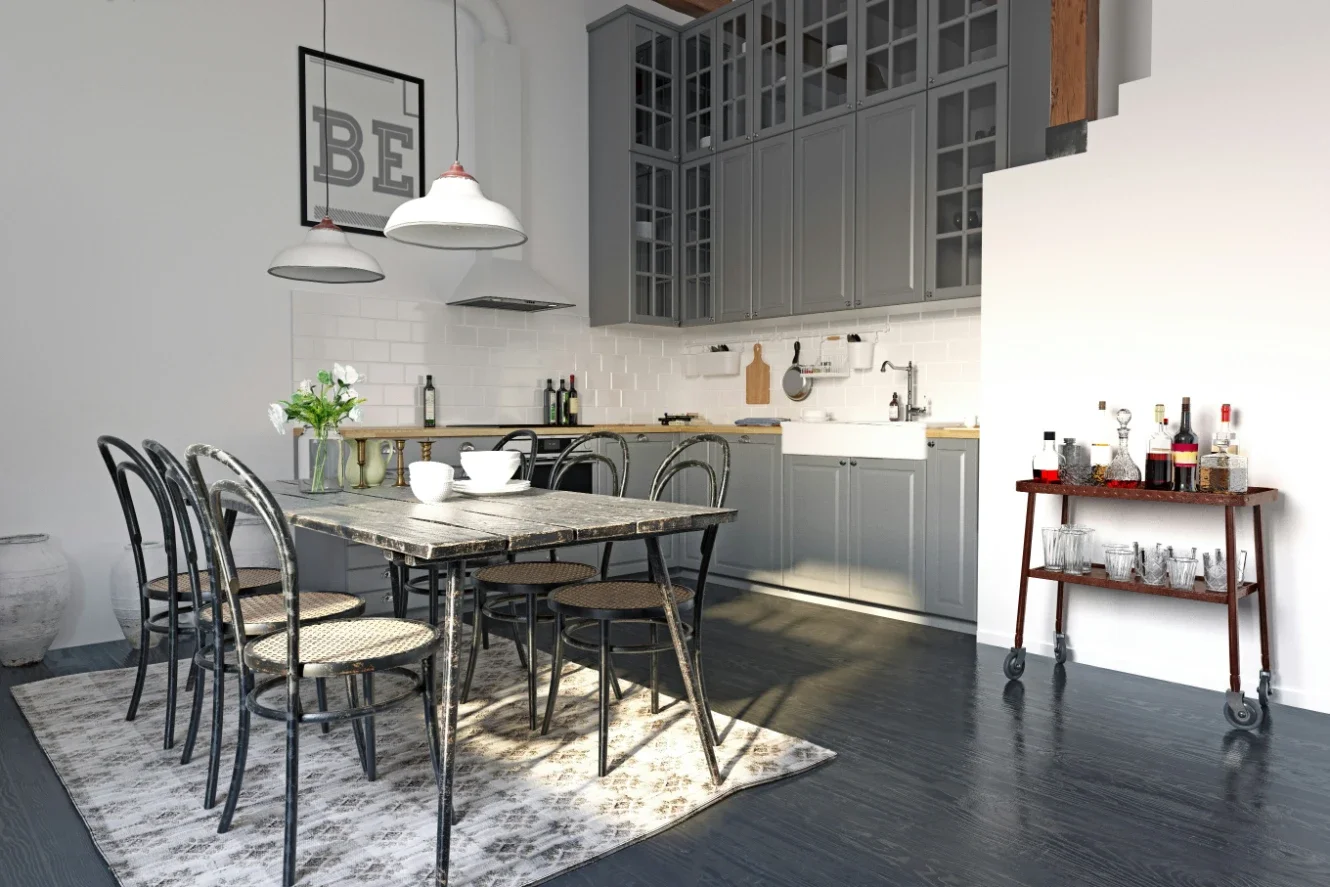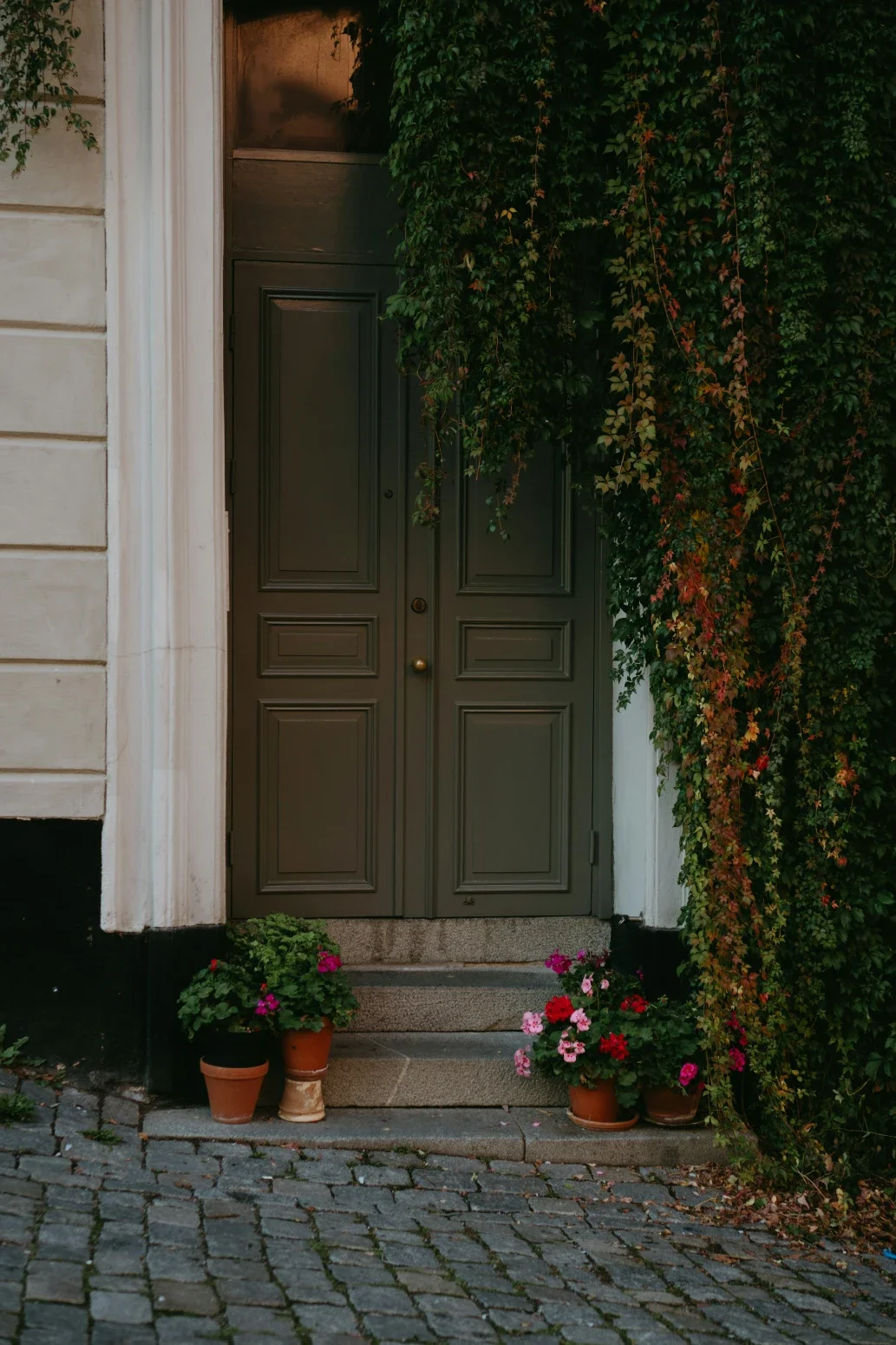15 Gravel Garden Ideas with Pots to Elevate Your Yard
Transform your outdoor space with stunning gravel gardens and pots. Discover 15 creative ideas for low-maintenance, drought-tolerant yard designs today!
Have you ever wondered how to create a stunning outdoor space that practically takes care of itself? Gravel gardens combined with strategic pot placement offer the perfect solution for busy homeowners who crave beauty without the backbreaking maintenance. These versatile designs blend natural textures with organized structure, creating spaces that feel both wild and wonderfully curated. Whether you're dealing with poor soil, water restrictions, or simply want to reduce your gardening workload, gravel gardens with pots deliver style and sustainability in equal measure. From Mediterranean-inspired courtyards to modern minimalist designs, the possibilities stretch as far as your imagination. Let's explore fifteen creative ways to transform your yard into a low-maintenance paradise that'll have your neighbors asking for your secret.
1. Mediterranean Oasis with Terracotta Pots
Transform your gravel garden into a sun-soaked Mediterranean retreat by incorporating warm terracotta pots filled with lavender, rosemary, and olive trees. The natural clay color of these containers perfectly complements the neutral tones of gravel while creating that authentic European charm you're after. Position larger pots as focal points along pathways, then cluster smaller ones in groups of three or five for visual impact. Add some ornamental grasses like fountain grass or blue fescue to create movement and soften the hard edges. The beauty of this design lies in its drought tolerance, as Mediterranean plants thrive in well-draining conditions that gravel naturally provides. Your outdoor space will transport you to the Italian countryside every time you step outside, complete with the intoxicating scent of herbs warming in the sun.
2. Japanese Zen Garden with Ceramic Planters
Create a serene sanctuary in your backyard by combining raked gravel patterns with carefully placed ceramic planters housing miniature trees and bamboo. This design philosophy embraces simplicity and balance, using smooth river rocks and fine gravel to represent water elements while glazed ceramic pots add refined elegance. Choose containers in muted colors like sage green, charcoal gray, or soft blue to maintain the peaceful atmosphere. Plant dwarf Japanese maples, small pines, or ornamental bamboo to achieve authentic Asian garden aesthetics. The key to success here involves restraint, so resist the urge to overcrowd your space with too many elements. Instead, focus on creating negative space that allows each planted container to shine as an individual work of art. Your zen garden will become a meditative retreat where stress melts away amid the harmonious blend of texture and form.
3. Desert Landscape with Succulent Containers
Embrace the beauty of arid landscapes by filling your gravel garden with an array of succulent-filled containers that celebrate water-wise gardening. Mix different pot sizes and heights to create visual interest, using materials like concrete, terracotta, or glazed ceramic that complement the desert theme. Plant dramatic agaves in large containers as statement pieces, then surround them with smaller pots featuring colorful echeveria, sedum, and barrel cacti. The combination of silver-gray gravel with the blue-green hues of succulents creates a cooling effect even on the hottest days. This design approach works particularly well in areas with water restrictions or for gardeners who travel frequently. Add some larger decorative boulders between pot groupings to enhance the naturalistic desert vibe. Your friends will marvel at how such a low-maintenance garden can deliver such high visual impact throughout the year.
4. Modern Minimalist Design with Geometric Planters
Achieve contemporary sophistication by pairing angular geometric planters with carefully graded gravel in monochromatic color schemes. Select containers in materials like powder-coated steel, concrete, or fiberglass with clean lines and bold shapes such as cubes, cylinders, or pyramids. Plant architectural specimens like snake plants, ornamental grasses, or carefully pruned boxwood spheres to maintain the modern aesthetic. The gravel base should be uniform in size and color, perhaps choosing black basalt or white marble chips for maximum impact. Arrange your containers in grid patterns or asymmetrical groupings that follow mathematical principles of design. This approach transforms your outdoor space into an extension of contemporary interior design, blurring the lines between inside and outside living. The result is a sophisticated garden that feels like an outdoor gallery where every element has been thoughtfully curated for visual perfection.
5. Cottage Garden Style with Vintage Pots
Bring romantic charm to your gravel garden by incorporating weathered vintage pots overflowing with cottage garden favorites like roses, delphiniums, and sweet peas. Hunt for unique containers at flea markets, including old galvanized buckets, enamel washbasins, or chipped ceramic pots that tell a story through their imperfections. The informal arrangement of these containers against a pea gravel backdrop creates that perfectly imperfect English garden aesthetic. Layer different heights by placing some pots on vintage crates or old chairs, allowing trailing plants like ivy geranium or bacopa to cascade downward. Mix annuals and perennials to ensure continuous blooms throughout the growing season, creating a tapestry of color against the neutral gravel canvas. This design celebrates abundance and whimsy, proving that gravel gardens don't have to feel stark or austere when paired with the right container choices.
6. Tropical Paradise with Large Statement Containers
Transport yourself to an exotic getaway by filling oversized containers with lush tropical plants that transform your gravel garden into a verdant paradise. Choose substantial pots in materials like glazed ceramic or resin that can accommodate the root systems of larger specimens like bird of paradise, elephant ears, or banana plants. The contrast between fine gravel and bold tropical foliage creates drama and excitement in your outdoor space. Position these statement containers strategically to create intimate seating areas or to screen less attractive views. Add smaller pots with colorful crotons, bromeliads, or flowering hibiscus to layer the tropical effect. During colder months, the mobility of containers allows you to protect tender plants by moving them indoors or to sheltered locations. Your backyard will feel like a resort destination where every day is a vacation from the ordinary world beyond your garden gates.
7. Alpine Rock Garden with Weather-Resistant Pots
Recreate mountain meadows in your own backyard by combining gravel mulch with weather-resistant containers filled with alpine plants and miniature conifers. Choose pots made from materials that can withstand freeze-thaw cycles, such as fiberglass, resin, or specially treated ceramics designed for cold climates. Plant compact perennials like saxifrage, sedum, and alpine phlox that naturally thrive in rocky conditions with excellent drainage. Vary the gravel sizes throughout your garden, using larger stones near planted containers to mimic natural mountain scree. Position pots at different elevations using mounded gravel or strategically placed boulders to create the illusion of mountainous terrain. This design approach works exceptionally well on slopes or in areas with challenging topography where traditional gardens might struggle. The resulting landscape captures the rugged beauty of alpine environments while remaining surprisingly low-maintenance throughout the seasons.
8. Coastal Theme with Weathered Wood Planters
Capture the relaxed vibe of seaside living by incorporating weathered wood planters filled with coastal plants into your gravel garden design. Select containers made from reclaimed driftwood, old boat timber, or purposely distressed wooden boxes that echo beachcombing treasures. Fill them with plants that tolerate salt spray and sandy conditions like ornamental grasses, sea holly, and lavender. Use pale-colored gravel such as crushed shells or white pebbles to enhance the coastal theme while providing excellent drainage for your potted plants. Arrange containers alongside pieces of driftwood, old buoys, or maritime rope to strengthen the nautical narrative. The combination creates a casual, wind-swept aesthetic that makes you feel like you're gardening beside the ocean, even if you're miles from the nearest beach. This design philosophy celebrates the beauty of natural weathering and the passage of time.
9. Formal Garden Design with Classical Urns
Elevate your gravel garden to estate-level elegance by incorporating classical urns and formal plantings that create a sense of timeless sophistication. Choose substantial containers in materials like cast stone, aged terracotta, or lead-finished fiberglass that reference historical garden design. Plant them with formally clipped topiary, standard roses, or symmetrical arrangements of annuals in coordinating colors. The gravel should be meticulously maintained with crisp edges and uniform depth, perhaps using decomposed granite for a refined appearance. Position urns as focal points at path intersections or to frame important views, always maintaining perfect symmetry in their placement. This approach works particularly well with architectural backdrops like stone walls or formal hedging. Your garden will exude the grandeur of European palace grounds while the gravel base ensures practical maintenance and excellent drainage for your investment-worthy containers.
10. Wildflower Meadow with Rustic Containers
Embrace natural beauty by scattering rustic containers filled with native wildflowers throughout your gravel garden to create a meadow-inspired landscape. Use containers made from natural materials like untreated wood, aged terracotta, or galvanized metal that blend seamlessly with the informal planting style. Fill pots with combinations of native perennials, ornamental grasses, and self-seeding annuals that attract pollinators and provide year-round interest. The gravel mulch suppresses weeds while allowing some desirable plants to self-seed into gaps, creating a naturalistic tapestry. Vary container heights and groupings to mimic the random beauty of wild meadows, avoiding any sense of rigid organization. This design celebrates biodiversity and ecological gardening while maintaining enough structure through the container placement to feel intentional rather than chaotic. Watch as butterflies, bees, and birds transform your garden into a living ecosystem that changes beautifully with each passing season.
11. Herb Garden Haven with Practical Pots
Transform your gravel garden into a culinary paradise by arranging practical containers filled with aromatic herbs within easy reach of your kitchen door. Choose pots with good drainage in materials like terracotta or glazed ceramic that regulate soil moisture for optimal herb growth. Plant a mix of Mediterranean herbs like thyme, oregano, and sage alongside annual favorites such as basil and cilantro. The gravel mulch reflects heat upward, creating the warm microclimate that many herbs prefer while preventing soil splash during watering. Organize containers by use, grouping pizza herbs together or creating a dedicated tea garden section with mint, chamomile, and lemon balm. Label each pot with decorative markers to identify herbs and add charm to the practical display. Your herb garden becomes both a beautiful feature and a functional extension of your kitchen, providing fresh flavors just steps away from your cooking space.
12. Color-Coordinated Display with Painted Planters
Create visual cohesion in your gravel garden by painting containers in a coordinated color palette that ties your entire outdoor space together beautifully. Select a color scheme that complements your home's exterior, perhaps choosing three shades from the same color family or contrasting colors that pop against the neutral gravel backdrop. Transform inexpensive terracotta or plastic pots with weather-resistant paint, creating custom containers that perfectly match your vision. Plant with flowers and foliage that either harmonize or contrast with your chosen container colors for maximum impact. The uniform gravel base allows your color-coordinated pots to take center stage without competing elements. Arrange containers in deliberate groupings that lead the eye through the garden, using color as a unifying thread. This approach proves that stunning garden design doesn't require expensive materials when you apply creative vision and a cohesive color strategy.
13. Vertical Garden Integration with Wall-Mounted Pots
Maximize your gravel garden's potential by incorporating vertical elements through wall-mounted containers that add dimension and increase planting space. Install sturdy brackets or modular systems on fences, walls, or specially constructed frames to support pots at various heights above the gravel base. Choose lightweight containers in materials like resin or fiberglass that won't stress mounting hardware while providing adequate root space for plants. Fill these elevated pots with trailing plants like ivy, petunias, or cherry tomatoes that cascade downward, creating living curtains of color and texture. The combination of ground-level gravel with vertical plantings draws the eye upward, making small spaces feel larger and more dynamic. This technique works especially well in narrow side yards or against boring fence lines that need visual interest. Your three-dimensional garden design transforms flat surfaces into productive growing space while maintaining the low-maintenance benefits of gravel groundcover.
14. Seasonal Rotation Garden with Moveable Containers
Design a dynamic gravel garden that evolves throughout the year by using lightweight, moveable containers that you can easily rearrange and replant seasonally. Choose pots with built-in wheels or place them on plant dollies to facilitate movement without strain, allowing you to refresh your garden's look regularly. Plant spring bulbs for early color, switch to summer annuals for peak season display, then transition to fall mums and winter evergreens. The stable gravel base provides a consistent backdrop while your container arrangements change with the seasons or your mood. Store off-season containers behind screens or in less visible areas, rotating them into prime positions when their time comes. This flexible approach means you're never stuck with a static design and can experiment with different combinations throughout the year. Your garden becomes a living canvas that reflects the changing seasons while maintaining its fundamental structure through the permanent gravel foundation.
15. Wildlife-Friendly Design with Natural Materials
Create a haven for local wildlife by selecting containers made from natural, untreated materials and filling them with native plants that provide food and shelter. Use pots crafted from unfired clay, untreated wood, or natural stone that blend harmoniously with the environment while providing safe spaces for beneficial insects. Plant native species that produce berries, seeds, or nectar to support birds, butterflies, and pollinators throughout the seasons. The gravel mulch creates basking spots for butterflies and provides nesting material for ground-dwelling bees when combined with areas of bare soil. Include shallow water features in wide, low containers to offer drinking and bathing opportunities for birds and insects. Position taller containers to create sheltered corridors where small creatures can move safely through your garden. This ecological approach transforms your outdoor space into a thriving habitat that supports biodiversity while maintaining the aesthetic appeal and low maintenance benefits of a gravel garden.
Conclusion
Gravel gardens with strategically placed pots offer endless possibilities for creating beautiful, low-maintenance outdoor spaces that reflect your personal style. Whether you prefer the zen simplicity of Japanese design or the abundant charm of cottage gardens, these fifteen ideas demonstrate how versatile this combination can be. The key lies in choosing the right containers, plants, and gravel types that work together harmoniously while serving your practical needs and aesthetic preferences.
Read next: 15 Rock Garden Ideas to Enhance Your Landscape
Frequently Asked Questions
Q1: How often should I water plants in pots placed in gravel gardens?
A: Check soil moisture twice weekly during summer, once weekly in cooler months.
Q2: What type of gravel works best for container garden settings?
A: Pea gravel or decomposed granite provides stability and excellent drainage properties.
Q3: Can I leave ceramic pots outside in gravel gardens during winter?
A: Only frost-proof ceramics survive freezing temperatures without cracking or breaking completely.
Q4: How deep should gravel be laid for a container garden?
A: Spread gravel three to four inches deep for proper weed suppression.
Q5: What size containers work best in small gravel garden spaces?
A: Mix varied heights using containers between twelve and twenty-four inches wide.

